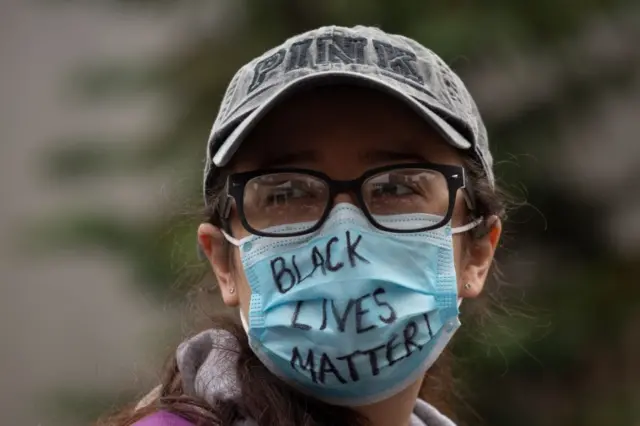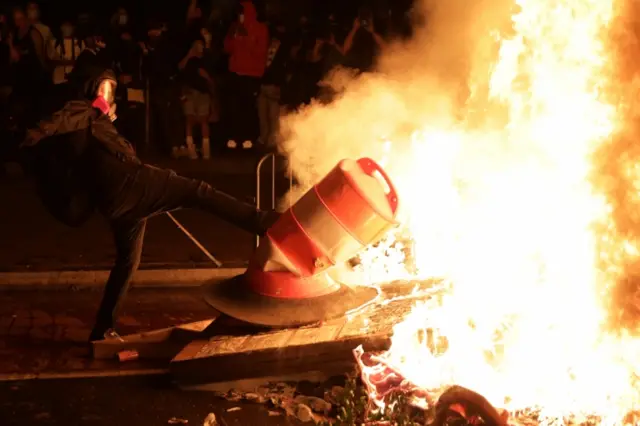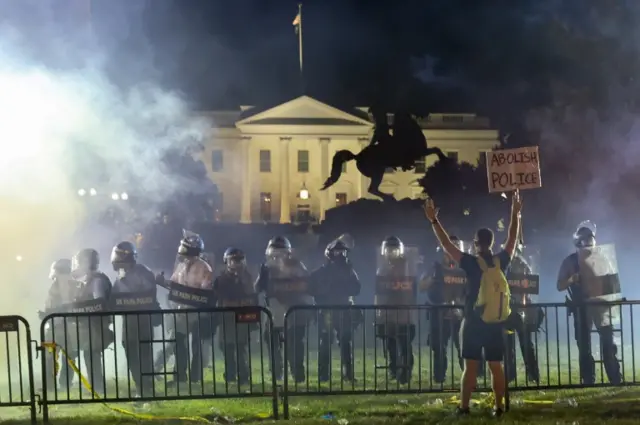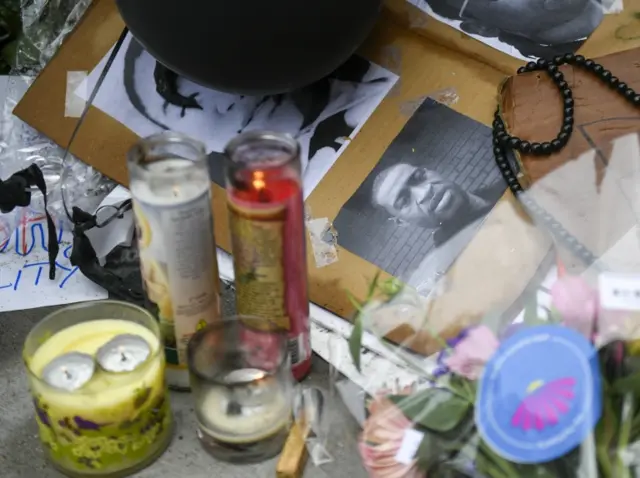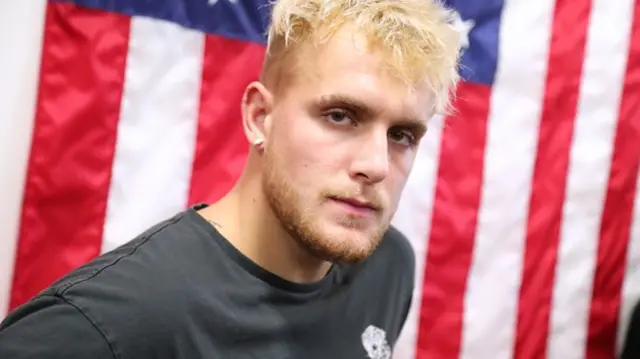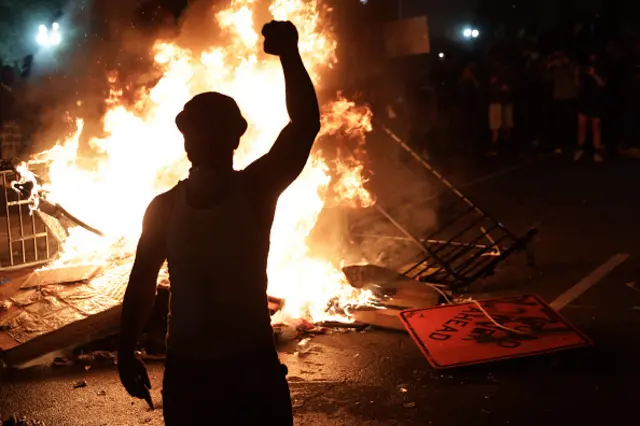What makes people think violence is OK?published at 13:59 BST 1 June 2020
 Helier Cheung
Helier Cheung
BBC News, Washington DC
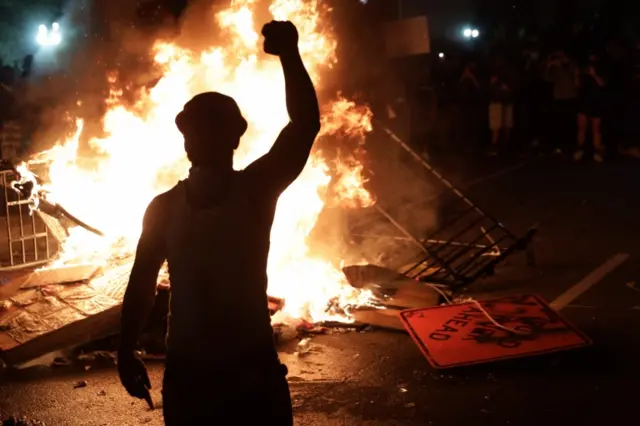 Image source, Getty Images
Image source, Getty ImagesDemonstrators started fires near the White House
It's not always clear why people who are normally non-violent can endorse protest violence.
But this could in part be explained by moral psychology, says Marloon Moojiman, an assistant professor in organisational behaviour at Houston's Rice University.
A person's sense of morality is central to how they see themselves, so "when we see something as immoral, it creates strong feelings, because we feel our understanding of morality has to be protected".
"This can override other concerns people have about keeping peace... If you think the system is broken, you're going to want to really do something drastic to show that that's not acceptable."
This can apply to a wide range of beliefs - for example, in an extreme case, someone who thinks abortion is a moral outrage may be more likely to say it's OK to bomb an abortion clinic, he says.
Research suggests that social media echo chambers could also make people more susceptible to endorsing violence, if they believe that their peers have the same moral views as them, he adds.
